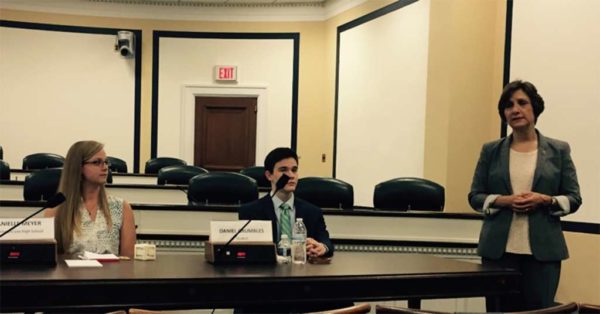The following Letter to the Editor was written by Aaron Wajsgras, who serves on Arlington Public Schools’ Budget Advisory Council and its Career, Technical and Adult Education Citizens Advisory Committee.
It’s no secret that workforce needs are changing. From coding to manufacturing, industry is pining for a STEM workforce that can think critically and creatively. No longer are the times of the switch board operator or the repetitive assembly line worker.
So, exposing students to rigorous, hands-on learning where they can apply content knowledge to promote higher-order thinking skills is necessary for the future workforce. And, at the rate technology is changing, “the future” could be just a few years away.
According to the NOVA Workforce labor market dashboard, over 6,800 positions in management, science, technical consulting and computer systems design and related services were posted between April and June of this year. Additionally, across the country, skills gaps (what’s available versus what’s needed) exist in manufacturing, healthcare and other major industries to the tune of 5 million unfilled jobs by 2020, according to Georgetown University.
The skilled and creative future workforce has been a hot-topic for the last handful of years. Consequently, the Congressional STEAM (Science, Technology, Engineering, Arts, and Math) Caucus and the CTE (Career and Technical Education) Caucus held a joint briefing to discuss opportunities to incorporate arts and design into in-demand CTE and STEM curriculum; and Arlington Public Schools represented half the panel last week.
In addition to perspectives from General Electric and the Rhode Island School of Design, Danielle Meyer, the technology and engineering teacher at Washington & Lee, along with Daniel Grumbles, a recent graduate of W&L and a student of Meyer’s, were invited to discuss W&L’s engineering and technology program.
Danielle teaches several courses focused on engineering and technological design (the “A” in STEAM) and shared testimony about the importance of the aesthetics in her field. “We talk about the design process with our projects. The students create sketches and drawings and then use software to add dimensions, and we redesign and test when necessary.”
“Creativity is difficult,” she exclaimed, and uses the question “Would you buy that?” to keep students focused on the importance of the “consumers” of the projects. Giving the student perspective, Daniel highlighted his gratefulness for the collaborative nature of Danielle’s courses, the improvement of his technological literacy, and expansion of his creativity that he “did not always get to use in his mainstream courses.” All necessary skill-building for Daniel’s future career.
Of note, Daniel discussed the generous resources that APS has provided towards engineering courses to purchase items like 3D printers. Hoping students in other schools across the country can get the opportunity that he had, he stated, “It was not simply to provide the technology, but to facilitate the integration of it into the classroom.”
The value of skills in STEM and CTE fields are currently, and will continue to be, critical for the future workforce. However, the importance of creativity and higher-order thinking combined with in-demand skills helps to create our leaders of tomorrow.
ARLnow.com occasionally publishes thoughtful letters to the editor about issues of local interest. To submit a letter to the editor for consideration, please email it to [email protected]. Letters may be edited for content and brevity.
Pictured: Danielle Meyer, Technology and Engineering Teacher, Washington-Lee High School; Daniel Grumbles, Class of 2017, Washington-Lee High School; Rep. Suzanne Bonamici (D-Ore.), STEAM Caucus co-chair. Photo by Aaron Wajsgras.


